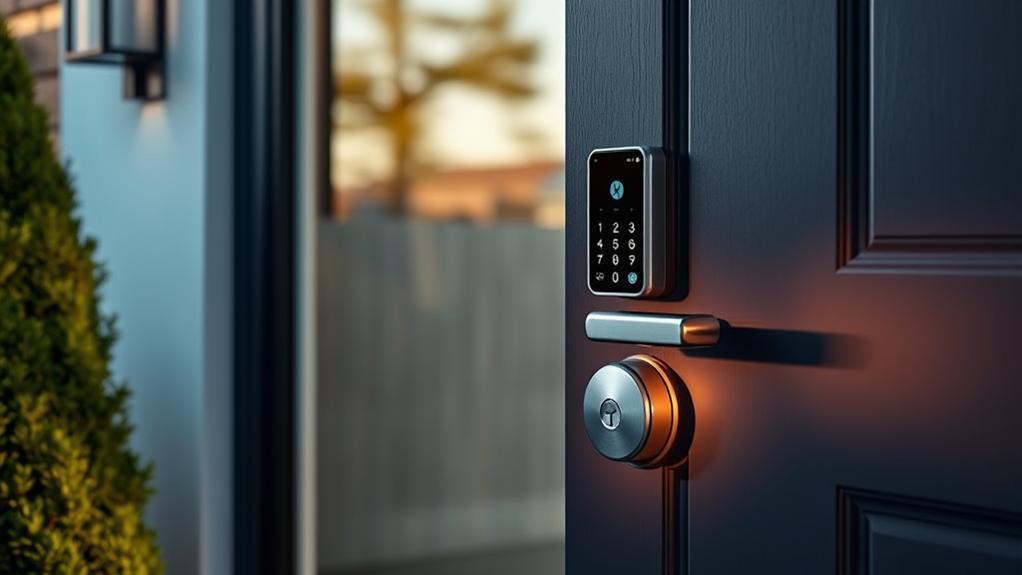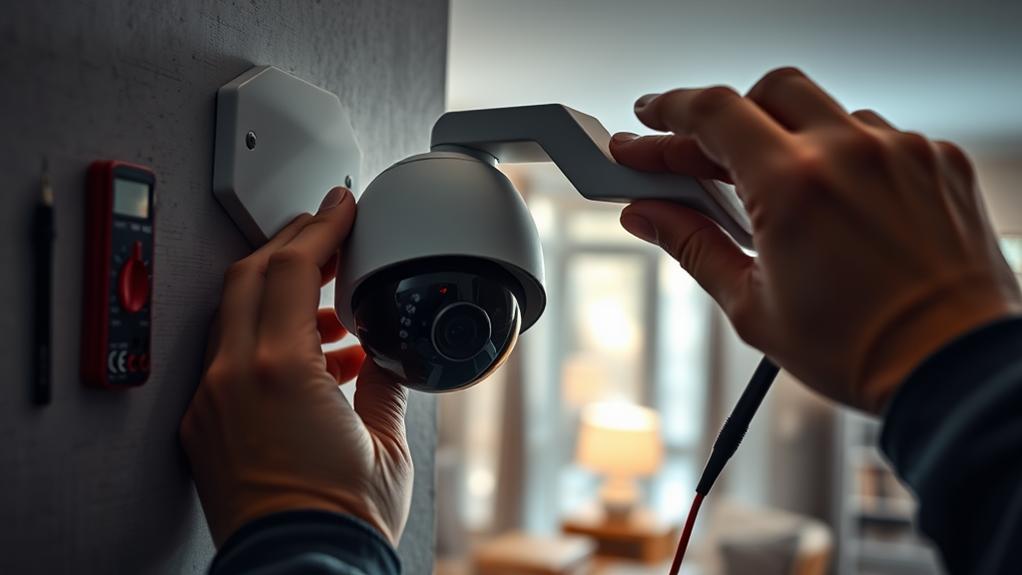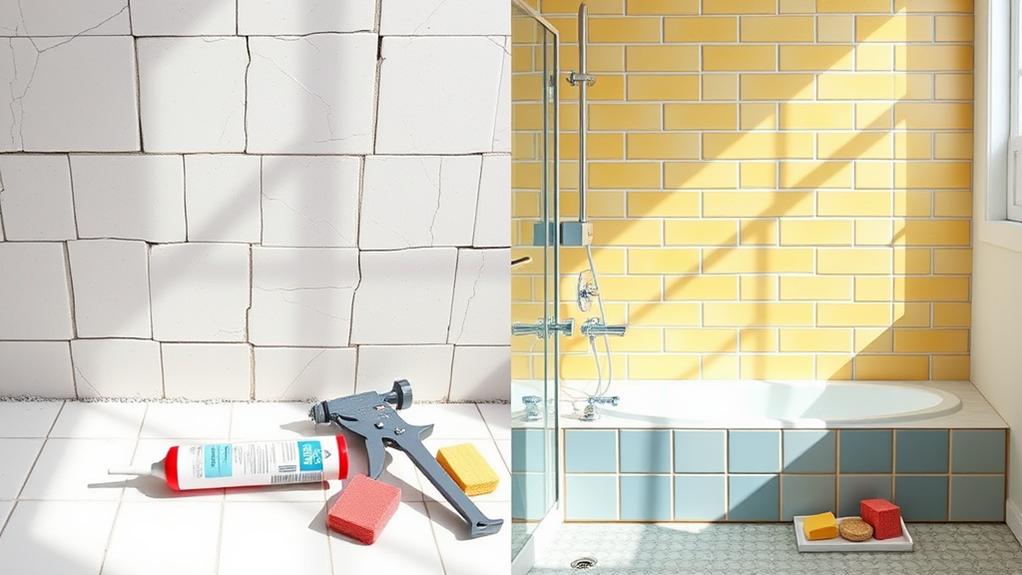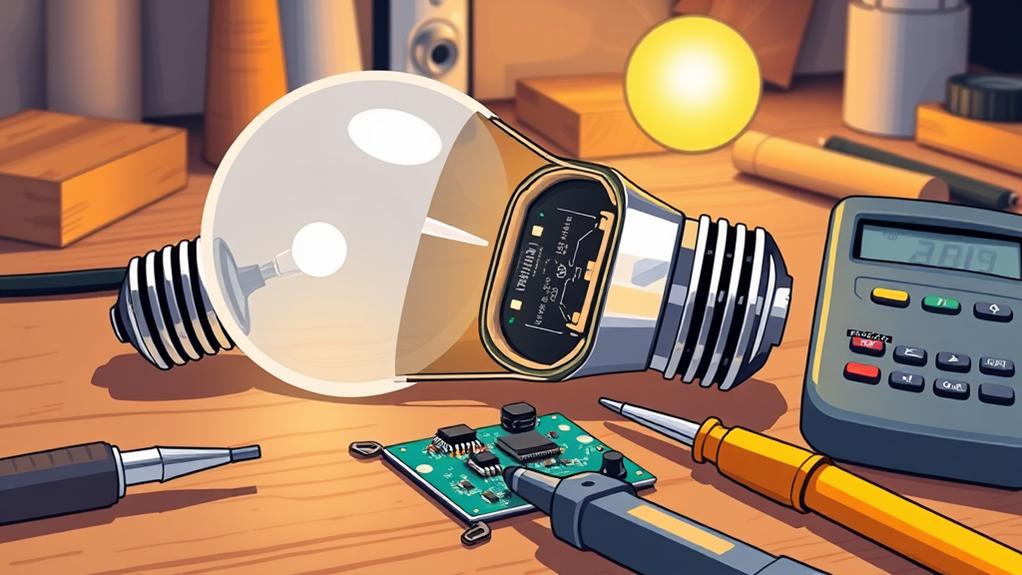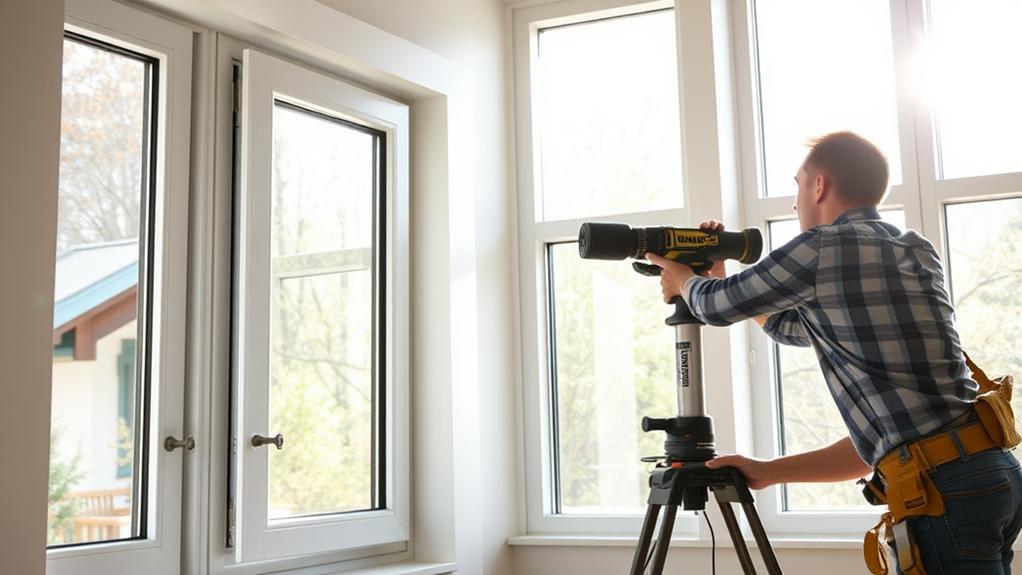While traditional locks offer a sense of familiarity, digital door locks provide a level of convenience and security that's hard to ignore. You might wonder how these advanced options can truly enhance your home's safety and streamline your daily routines. As you consider making the switch, it's crucial to explore the benefits and features that set digital locks apart from their mechanical counterparts. Understanding the best choices available could greatly impact your home security strategy. What should you know before taking the plunge?
Benefits of Digital Door Locks
Embracing digital door locks can considerably enhance your home security. These locks offer a level of convenience and peace of mind that traditional keys simply can't match. No more fumbling through your bag or pockets for your keys; you can open your door with a simple code or even your smartphone. This ease of access means you're less likely to be locked out, and it streamlines your daily routine.
Additionally, digital locks often come with advanced security features. You can easily change access codes whenever needed, allowing you to grant or revoke entry without needing to replace physical keys. This is particularly useful for guests or service personnel—just provide a temporary code and you're done.
Moreover, many digital locks integrate with home security systems, sending alerts if someone tries to tamper with them. You can also monitor access remotely, giving you control over who enters your home, even when you're not there.
Choosing the Right Lock
When it comes to choosing the right digital door lock, you'll want to contemplate several key factors that align with your needs and lifestyle.
Digital locks come with various features, and understanding them can help you make an informed decision.
- Security Level: Look for locks with high-security ratings and encryption features. The more secure the lock, the better it protects your home.
- Access Methods: Consider how you want to access your lock. Options include keypads, fingerprint scanners, and smartphone apps. Choose one that suits your daily routine.
- Battery Life: Check the battery life of the lock. Some models offer long-lasting batteries, while others may require frequent replacements. A lock with low battery alerts can be a lifesaver.
- Compatibility: Confirm the lock you choose works with your existing door hardware and smart home systems. Compatibility will ease installation and future upgrades.
Tools Needed for Installation
Installing a digital door lock requires a few essential tools to guarantee a smooth and efficient process. First, you'll need a screwdriver, preferably a Phillips-head, to remove your old lock and secure the new one. A drill may also be necessary if the new lock requires additional holes; make sure you have the appropriate drill bits for your door material.
Next, a tape measure will help you verify proper alignment and fitting, particularly if you're installing a new lock on a door that previously didn't have one. You might also want a chisel for any adjustments to the door or strike plate, especially if the fit isn't perfect.
A level will assist in making sure your lock is installed straight, which is vital for functionality. Lastly, having a utility knife on hand can be useful for cutting any packaging or adjusting materials as needed.
Gather these tools before you start, and you'll be well-prepared to tackle the installation process with confidence. With the right tools, you'll verify your new digital door lock fits securely and operates effectively.
Step-by-Step Installation Guide
With your tools gathered and ready, you can jump into the installation of your digital door lock. Follow these simple steps for a smooth process:
1. Remove the Existing Lock: Use your screwdriver to take off the old lock. Make sure to remove any mounting plates or screws completely.
2. Prepare the Door: Check the door's thickness and guarantee it's compatible with your new lock. Clean the area where you'll install the digital lock to avoid any debris.
3. Install the Digital Lock: Position the lock's exterior part through the door hole. Secure it with the provided screws.
Next, attach the interior part of the lock, making sure the wiring (if any) is properly aligned.
4. Test the Lock: Before finalizing everything, test the lock with the keypad. Verify it opens and locks smoothly.
If everything works well, finish tightening all screws.
Once you've followed these steps, your digital door lock should be securely in place. Enjoy your upgraded home security!
Connecting to Your Smart Home
Digital door locks can seamlessly integrate into your smart home ecosystem, enhancing both convenience and security. By connecting your lock to your home's Wi-Fi network, you can control it remotely through your smartphone or tablet. This allows you to lock or release your door from anywhere, giving you peace of mind when you're away from home.
To get started, check if your digital lock is compatible with your smart home hub, whether it's Amazon Alexa, Google Assistant, or Apple HomeKit. Once you've confirmed compatibility, follow the manufacturer's instructions to pair the lock with your hub. This process usually involves downloading an app, creating an account, and following prompts to connect devices.
Once paired, you can enjoy features like voice control and automation. For instance, you can set your lock to automatically secure itself at a certain time each night.
Plus, you can receive notifications when someone enters or leaves your home, ensuring you're always in the loop.
Integrating your digital door lock into your smart home not only simplifies your life but also strengthens your overall security strategy. Embrace technology, and enjoy the benefits of a connected home!
Testing Your New Lock
Before you start relying on your new digital door lock, it's essential to test its functionality to guarantee it operates as expected. You wouldn't want to find out it's malfunctioning when you're in a hurry!
Here's a simple checklist to help you through the testing process:
- Check the Keypad: Make sure the keypad responds correctly when you input your code. Try multiple codes, including the correct one and an incorrect one, to verify it behaves as it should.
- Test the Smart Features: If your lock connects to a smartphone app, verify that you can lock and open the door remotely. This feature is critical for convenience and security.
- Assess Battery Life: Monitor how the lock indicates low battery levels. You need to know how and when to replace the batteries to avoid being locked out.
- Simulate Real-life Scenarios: Lock and open the door multiple times, including when you're outside. This will help you verify the lock operates smoothly in different situations.
Maintenance Tips for Longevity
After you've thoroughly tested your new digital door lock, maintaining its functionality is key to ensuring it lasts for years.
Start by regularly cleaning the lock and keypad. Use a soft, damp cloth to wipe away dust and grime, and avoid harsh chemicals that could damage the finish or internal components.
Next, check the batteries periodically. Depending on the model, you might need to replace them every six months to a year. Keep an eye on the battery indicator, and consider using high-quality batteries to extend their lifespan.
It's also important to inspect the hardware. Make sure screws are tight and the lock operates smoothly. If you notice any unusual noises or resistance, it could be a sign of wear that needs addressing.
Additionally, avoid exposing the lock to extreme weather conditions. If your lock is outdoors, consider a protective cover to shield it from rain or direct sunlight.
Troubleshooting Common Issues
When issues crop up with your digital door lock, it's vital to tackle them promptly to maintain security and functionality.
Here are some common problems you might encounter and how to resolve them:
- Battery Drain: If your lock isn't responding, check the battery. Replace it if it's low, and consider using high-quality batteries for better longevity.
- Incorrect Code Entry: If you're having trouble accessing, verify you're entering the correct code. Remember, some models lock you out after multiple incorrect attempts, so double-check before trying again.
- Connectivity Issues: If your smart lock isn't connecting to your home network, restart the lock and your router. Confirm your Wi-Fi signal is strong in that area, as weak signals can cause issues.
- Physical Obstructions: Sometimes, dirt or debris can interfere with the lock's mechanism. Regularly clean the lock's exterior and verify there's nothing blocking the latch or bolt.
Enhancing Security Features
Troubleshooting common issues with your digital door lock helps keep it functional, but enhancing its security features takes your home protection to the next level.
One of the simplest ways to boost security is by enabling two-factor authentication. This means you'll need to use both a passcode and a mobile app to access your door, adding an extra layer of protection against unauthorized access.
Consider integrating your lock with a home security system. This allows for real-time alerts whenever someone accesses your door, giving you peace of mind.
Additionally, look for locks that offer temporary access codes. This feature lets you grant visitors or service personnel limited-time access without sharing your primary code.
Regularly updating your lock's firmware is vital too. Manufacturers often release updates that fix vulnerabilities, so staying current is important.
If your lock supports it, set up automated alerts for low battery notifications. This guarantees you won't be locked out due to power issues.
Future Trends in Smart Locks
As technology continues to evolve, the future of smart locks promises to revolutionize home security even further. You can expect several exciting trends that will enhance convenience and safety in your home.
- Biometric Access: Imagine gaining access to your door with just your fingerprint or facial recognition. This technology is becoming more affordable and reliable, making it a popular choice for homeowners.
- AI Integration: Smart locks will soon utilize artificial intelligence to learn your habits. They'll adjust settings based on when you typically leave or arrive home, providing a seamless experience tailored to your lifestyle.
- Remote Monitoring: With advancements in connectivity, you'll have the ability to monitor your locks in real-time from anywhere. This means you can check if you secured the door while you're at work or on vacation.
- Interconnectivity: Future smart locks will work seamlessly with other smart home devices. You'll be able to create automated routines, like locking your doors when your security system activates.
Conclusion
As you begin this journey of upgrading your home's security, think of digital door locks as your loyal sentinels, standing guard at the gateway of your castle. They offer not just protection but a seamless blend of convenience and control. By embracing this modern technology, you're not just securing your home; you're inviting peace of mind into your domain. So, take the leap and let your newfound guardians watch over you, allowing you to focus on what truly matters—your family and your peace.







